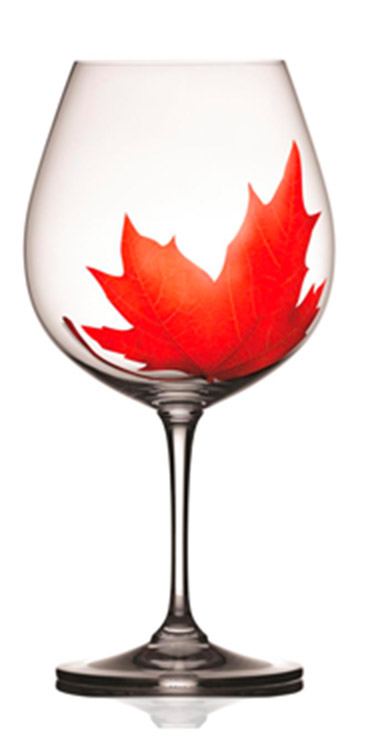Direct-to-consumer sales of Canadian wine: Why waiting until May 2026 is too late
*Click here to see the published article
Written by: Douglas Hart, President of Hart & Associates
Published by: Food In Canada
With the high public awareness of free trade and tariff wars, there is an increased realization that Canada does not even have free trade within our own country. Interprovincial trade barriers have been in place for decades, including those inhibiting the movement of labour, trucking and the sale of wine. One wonders why the sale of Canadian wine is restricted by provincial borders when Canada is trying to expand free trade with other countries. It is time for Canada to walk the talk on free trade by removing provincial trade barriers for the sale of wines.
A snapshot of the Canadian wine industry
There are an estimated 615 wineries in Canada. B.C. has 245 and Ontario has 185 with the balance in Nova Scotia and other provinces. However, Ontario produces a high percentage of the wine in Canada (62 per cent) as they have considerably more acreage of grapes. Canadian wineries exported an estimated $99.8 million worth of wine in 2024. Eighty-five percent of this went to the U.S. This pales in comparison to the wine Canada imports. In 2024, Canada imported $2.67 billion of wine, 69 per cent of this came from France, Italy and U.S.

Food In Canada, 2025
With U.S. wines taken off the shelves in many provinces in March, consumers are increasingly buying wines from their own province as well as those from Italy, France, Spain, Chile and other countries. LCBO sales results show that since U.S. wines have been pulled from its shelves Ontario wines have enjoyed a big jump in market share followed by a less pronounced market share increase for other countries.
However, consumers are seeing few wines from other provinces at their liquor stores. Consumers in Ontario have a wide selection of Ontario wines but see very few B.C. wines. Similarly, B.C. consumers can buy B.C. wines but very few from Ontario. It is a common complaint from B.C. wineries that it is easier for them to sell their wine to Washington, Oregon, and other U.S. states than it is to sell to the Ontario market. To open up some of these provincial barriers, Canada is in the process of reforming its interprovincial trade laws for wine and alcohol to allow for direct-to-consumer (DTC) sales of Canadian wine across provinces by May 2026.

Sandbanks Winery (CNW Group/Arterra Wines Canada, Inc.)
The proposed DTC wine program
Currently, wine and alcoholic regulations do not allow wineries to sell wine directly to consumers in other provinces. The federal government along with the provinces and territories signed a MoU on June 30, 2025, on an action plan for the DTC program.
The DTC plan would allow wineries, distilleries and craft brewers to directly sell wine and alcohol to customers in other provinces. Some in the wine industry are slightly ahead of this plan. Some wineries have been selling wine to customers in other provinces by way of their wine clubs, referred to by some as a ‘grey market’. Lightning Rock Winery, Summerland, B.C., recently announced plans to ship wine to customers in Ontario immediately even though regulations aren’t in place. The industry is clearly signalling to government that May 2026 is too late to launch this program.
B.C. and Manitoba already have a DTC wine agreement in place as does Nova Scotia. B.C. and Nova Scotia allow DTC wine sales if they consist of 100 per cent Canadian wine (VQA). Alberta was included in the B.C.-Manitoba agreement but then decided to include an ad valorem tax (a percentage-based liquor markup on ‘high value’ wine) along with its planned $3 per bottle admin fee. This move made B.C. wines too expensive and B.C. wineries have stopped selling to Alberta customers. This was seen as a tax grab particularly in light of the fact that Alberta does not have a wine industry to protect. Therein lies the rub. The devil is in the details about how this system will work. Provinces will have to put aside their tendency to put additional taxes or mark-ups on wine coming in from other provinces to make this plan work.
The only way the industry sees this plan working is for wine to be sold to out-of-province customers on the same basis as selling to local consumers. For example, an Ontario customer would order wine from a B.C. winery and pay the usual B.C. sales tax but not any additional tax or LCBO mark-up when it arrives in Ontario (other than perhaps a small LCBO admin fee). The same arrangement would apply for a B.C. customer ordering Ontario wine. Wineries feel that this system will fail if provinces impose mark-ups or any fees beyond a nominal amount for out-of-province DTC sales.
Benefits of the DTC wine program
My interviews with wineries in Ontario, B.C. and wine grower associations show that there is keen interest in seeing a direct-to-customer program for wine. It is believed that wineries of all sizes would benefit. Small, medium- and large-sized wineries see opportunities to expand sales through their wine club program by presenting personalized offerings, special discounts and other promotions. (Wineries make the highest profit by selling their wine at their tastings room and to wine club members as they do not pay liquor board mark-ups as they would at liquor stores).
The challenge for Canadian wineries, particularly for the small and medium-sized, is how to get their name in front of consumers in other provinces. Promoting their tasting rooms for visitors, expanding their wine club program to out-of-province consumers, offering special wine selections, holding special events in target cities, creating a compelling website and effectively using social media are all options for wineries wishing to maximize their success for the DTC program.
Wine industry representatives believe the DTC wine program will allow greater choice for consumers, but caution that these sales may only eventually reach perhaps 2 per cent of all wine sales in Canada. So for provinces that feel they will miss out on taxes, the vast majority of wine sales will continue to come from the provincial liquor stores.
Will this mean free trade for wine in Canada?
If the provinces can come to an agreement to create a level playing field on how provincial admin fees, mark-ups, rebates will be handled, the DTC wine program would allow Canadian consumers to gain some degree of access to wines of their choice from other provinces.
However, this will not solve the problem of being unable to buy wine from other provinces at the liquor store. Even with the DTC program in place, the vast majority of Canadian wine sold at provincial liquor stores will continue to heavily favour their provincial wineries. So, to truly remove interprovincial trade barriers for wine the provincial liquor stores need to prominently display wine from other provinces.
Let’s give Canadian wines in liquor stores across Canada at least as much shelf space as afforded to wines from Italy, France, U.S., Chile and other countries. If we truly believe in free trade, then its time to remove provincial protectionism and open up the market for all Canadian wines.
Douglas Hart is president of Hart & Associates Management Consultants, a firm that has been providing business development services to the Canadian food and agriculture industry for over 30 years. He can be reached at douglashart@hartconsultants.com.
